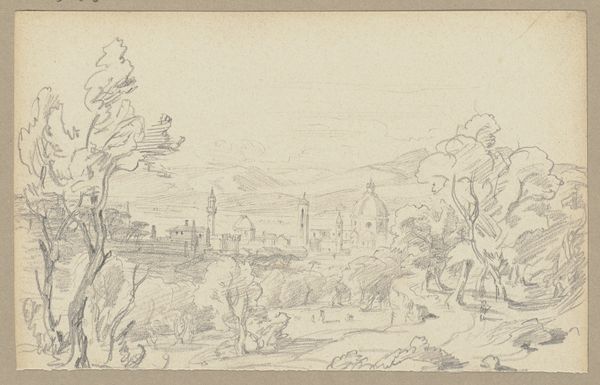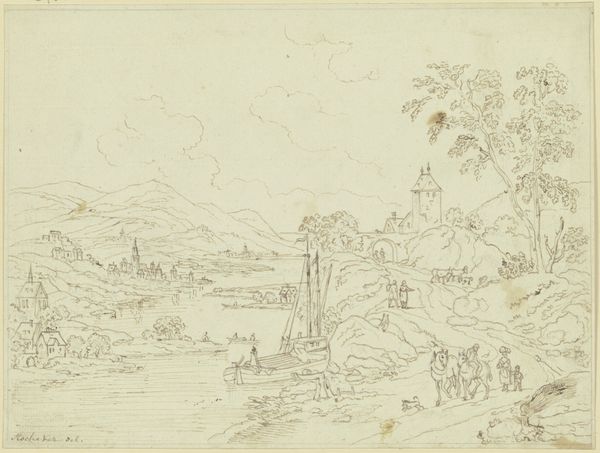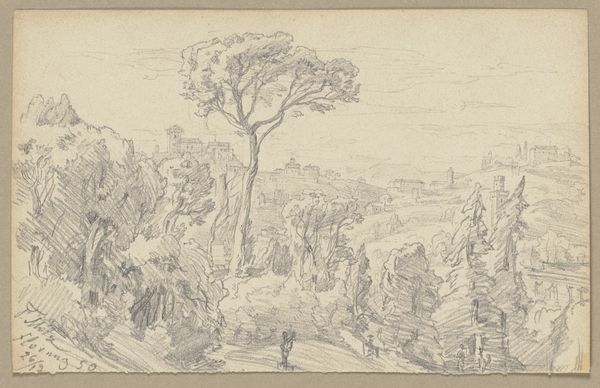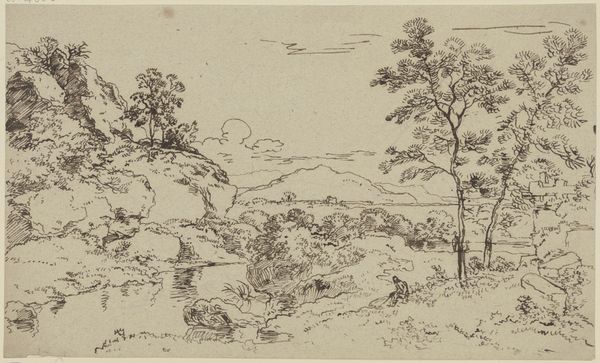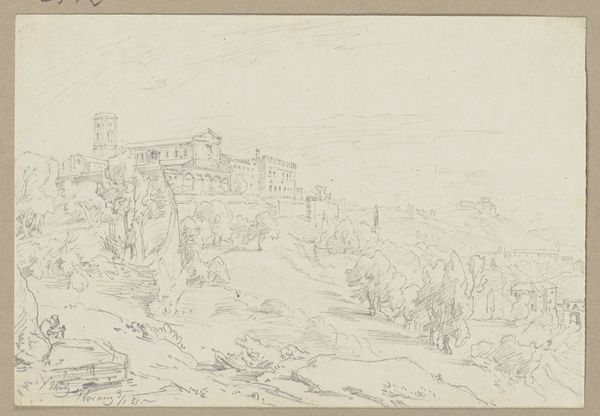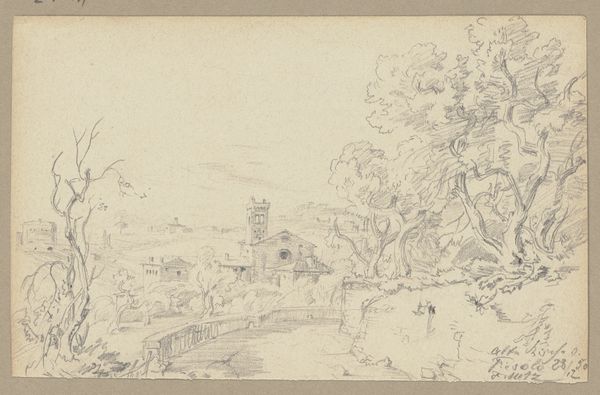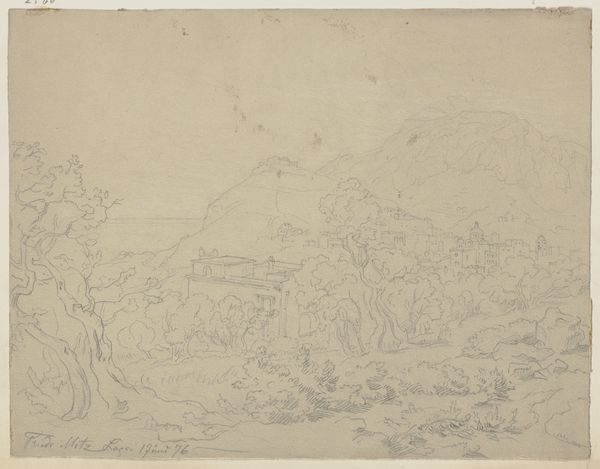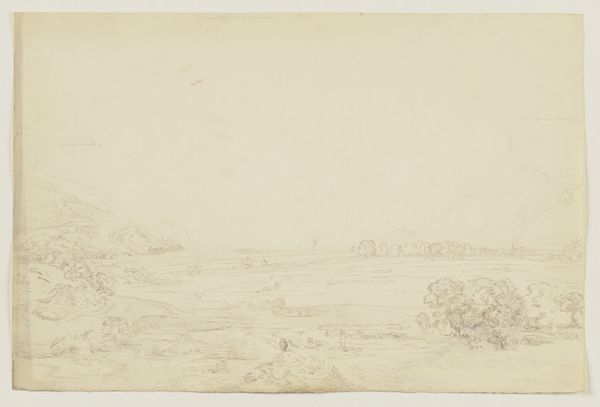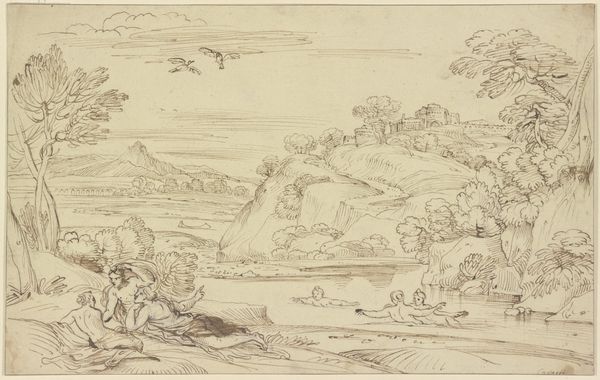
Copyright: Public Domain
Curator: Let's take a look at Friedrich Metz's "Near Fiesole," a pencil drawing from around 1851, now held here at the Städel Museum. What's your first take? Editor: Immediately, I notice the subdued atmosphere, almost a meditative stillness. The soft pencil lines create a delicate, almost ethereal scene. Curator: Yes, that softness is key. For me, the drawing is about the symbols embedded within the romantic vision of landscape. See the distant town nestled on the hill? It evokes ideas of pilgrimage and the search for spiritual meaning. Editor: I see it somewhat differently. I'm more drawn to the perspective and how the foreground is weighted. It almost feels like Metz is creating a hierarchy, positioning himself as an observer of an untouched landscape. Curator: That's interesting, considering the burgeoning industrial revolution during this period. This idealization of the countryside represents a kind of resistance against modernity, a longing for an imagined past, maybe. It reminds us that even seemingly objective landscapes are often loaded with cultural significance. Editor: Exactly! And it’s also critical to understand who had access to these romantic ideals. While some celebrated the purity of nature, industrial labor became increasingly brutal and exploitative, primarily impacting poor, rural, and immigrant populations. It also implies that, at the time, leisure and aesthetic contemplation were probably mostly activities enjoyed by privileged classes. Curator: That connection between visual pleasure and socio-economic privilege is insightful, and not exclusive to this era, either. From a more art-historical view, it is an incredible demonstration of Metz's talent with such a simple tool. The varying line weights he achieves with just a pencil! And you see these trees and the hill behind it? He repeats those shapes on purpose to unify the foreground, middle ground and distance, almost creating a unified symbol that binds the image. Editor: I’m definitely struck by the drawing’s nuanced romanticism. It’s really made me reconsider the power of landscapes to shape and reflect very specific cultural beliefs and biases of the 19th Century. Curator: Indeed. A powerful demonstration that even something as apparently simple as a pencil sketch contains layers of meaning and unspoken narratives.
Comments
No comments
Be the first to comment and join the conversation on the ultimate creative platform.

